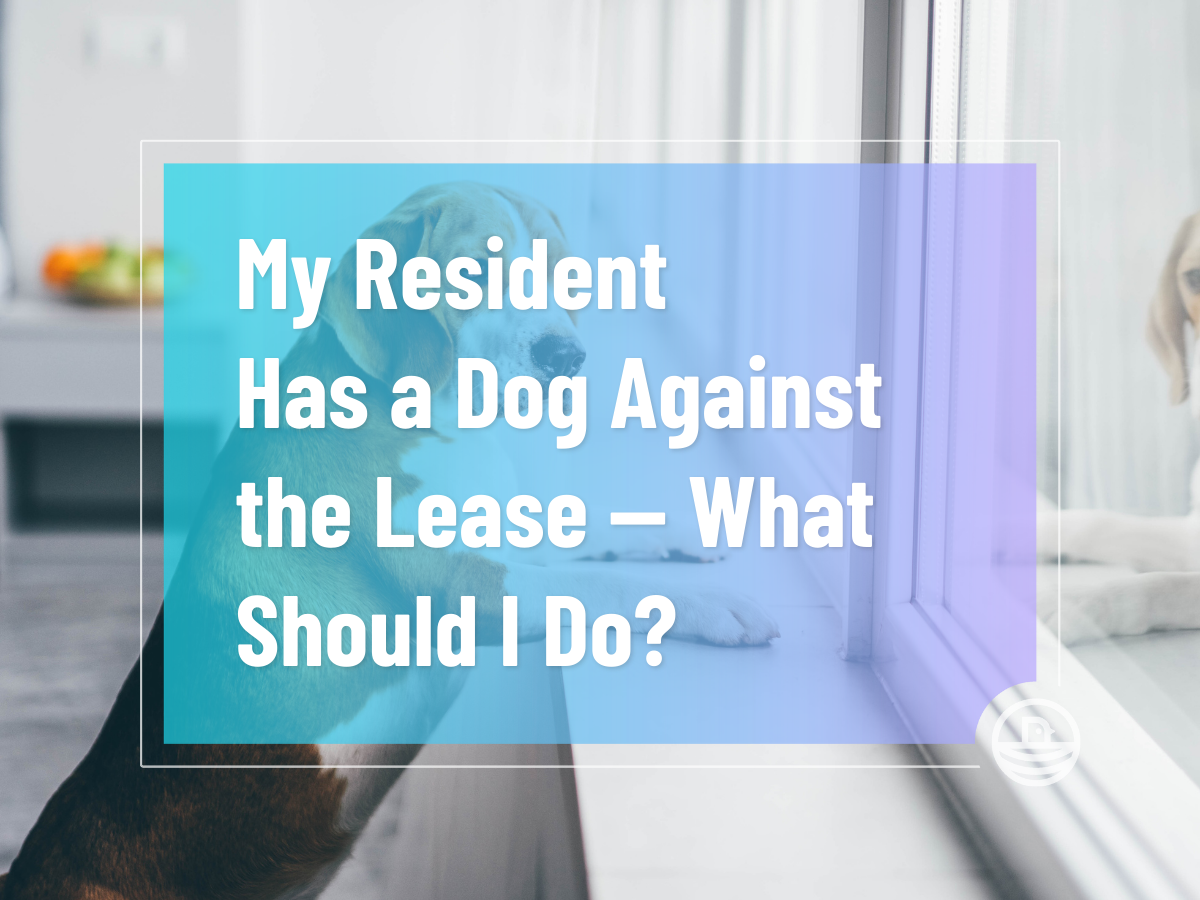As a rental property owner and landlord, the goal should always be to set clear rules for the residents living in your home. That includes clarifying whether or not you allow them to have pets.
But what happens when a resident moves in without a dog, only for you to later discover that they’ve added a furry friend to the household — despite your lease explicitly prohibiting it? This is a common issue we hear about from landlords, and as frustrating as it may be, handling it properly can make all the difference.
In this article, we’ll take a look at the options you have when facing this situation and provide actionable advice you can take to resolve the issue as swiftly as possible.
Step 1: Review Your Lease Agreement
The first thing you should do when you find out your resident has an unauthorized pet on the property is to revisit your lease agreement.
A well-drafted lease should clearly outline pet policies, including restrictions on having a pet without prior approval and the consequences of violating this rule.
If your lease explicitly states that dogs are not allowed, your resident is in material breach of the agreement. This gives you the leverage to require compliance and enforce penalties if they choose not to comply, like a fine or even eviction… Psst — do you have eviction protection?
Step 2: Confirm and Document the Violation

Before taking any action, it’s important to ensure you have solid evidence that the resident has a dog.
If you’ve heard barking, seen pet supplies, or received reports from neighbors, you might want to schedule a property inspection or request written confirmation from the resident. Document everything, including photos (if applicable) and written communication, to ensure you have a clear record of the violation.
Step 3: Communicate with the Resident
Once you’ve confirmed the presence of a dog, the next step is to communicate with your resident.
Approach the situation professionally and calmly. Send a written notice detailing the lease violation and outlining their options. This notice should include:
A reminder of the lease’s pet policy
Documentation of the violation
Potential consequences if they do not resolve the issue
A deadline for compliance
Respectful, clear communication is key in situations like this. So, when addressing the issue with your resident, use neutral and professional language to avoid escalating tensions. A firm but respectful tone can encourage cooperation and prevent unnecessary conflict.
Instead of making accusations, you should also focus on restating the lease terms and the necessary steps to resolve the violation. This approach fosters a more productive conversation and increases the likelihood of a positive resolution.
Step 4: Decide How to Proceed
At this stage, you have a decision to make. You can either allow the resident to keep the dog with added conditions or require them to remove the pet.
Here’s how each option plays out:
Option 1: Allow the Dog to Stay (With Conditions)
If you’re open to allowing the dog to stay on the property, like the landlord in the “Polite Cat” meme, you can modify the lease to include a pet agreement.
This typically involves:
Charging a non-refundable pet fee
Requiring an additional pet deposit
Adding a monthly pet rent fee
Ensuring the resident obtains renters insurance with pet liability coverage
Before agreeing to this, consider whether the breed is one that your insurance company allows. Certain breeds may not be covered by your insurance policy so it’s important to do your research ahead of time and clearly state these guidelines.
Option 2: Require Removal of the Dog
If you prefer to enforce your no-pet policy, issue a formal lease violation notice.
Many lease agreements allow for a 7-day notice to cure, meaning the resident has a week to remove the dog. If they comply, the issue is resolved. If they don’t, you might need to escalate to eviction proceedings for non-compliance with the lease terms.
Step 5: Consider Legal Action if Necessary
If your resident refuses to remove the pet or comply with your conditions, you may have grounds for eviction. That’s because, in most cases, a pet policy violation is considered a material lease breach, meaning landlords can terminate the agreement.
But it's important to note that a pet policy violation is only considered a material breach if you included these terms in your lease agreement upfront. If you didn't include pet policy terms in your lease, you don't have grounds to evict your resident and may be forced to just deal with the situation for the remainder of the lease term.
If you find that your resident is in breach of their lease, you can choose to move forward with eviction proceedings. Before moving forward with eviction, consult a local attorney or professional property management company with eviction support services to ensure you’re following proper legal procedures.
Step 6: Prevent Future Issues
To avoid this problem down the road, consider these preventative measures:
Clearly define pet policies in your lease with specific language about penalties and enforcement.
Discuss pet rules at lease signing so residents fully understand expectations.
Conduct routine property inspections to catch potential lease violations early.
Require renters insurance that includes pet liability coverage.
Hire a professional property manager, who can handle all the above.
Final Thoughts: "My Resident Has a Dog Against the Lease — What Should I Do?"
Finding an unauthorized pet in your rental property can be frustrating, but handling it with professionalism and clear communication is key. And whether you choose to allow the pet under specific conditions or enforce your no-pet policy, taking the right steps ensures you maintain control over your property while minimizing risks.
If you need help navigating lease violations or enforcing policies, Evernest is here to help. We specialize in property management solutions that keep your rental business running smoothly while protecting your investment.


